The ocean is home to creatures as strange as they are fascinating, each equipped with incredible survival skills. From the eerie blobfish to the mysterious vampire squid, these underwater residents are far from ordinary. Many of them look like they belong to another world, yet each plays a unique role in the depths they inhabit. Their survival tactics range from camouflage to withstanding high-pressure environments. Meet these strange ocean dwellers and discover the astonishing ways they survive in the deep.
Blobfish

The blobfish might look like a melted jelly, but it’s perfectly adapted to life in extreme depths. Living nearly 4,000 feet underwater, it thrives in high-pressure environments where few can survive. Its gelatinous body acts like a cushion against crushing pressures, eliminating the need for strong muscles or a swim bladder. Without much energy expenditure, the blobfish simply floats, feeding on edible matter that drifts by. Although it appears limp and strange on land, in its natural habitat, this appearance provides it with a unique advantage. Its body also helps it avoid predators by blending in with the ocean floor. Despite its odd looks, the blobfish is an expert at surviving where few creatures dare to go.
Vampire Squid
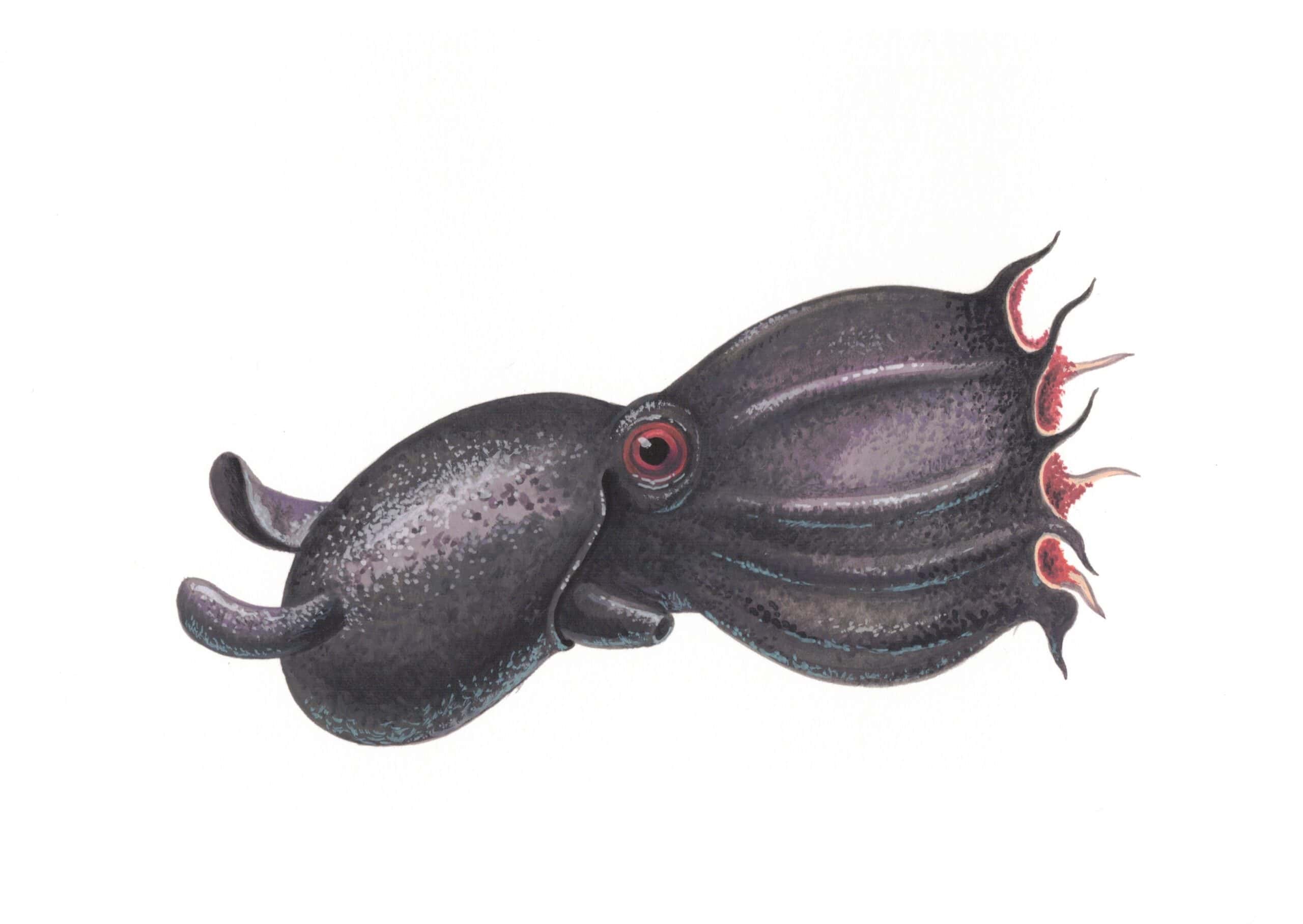
With a name as intriguing as its appearance, the vampire squid uses both stealth and defense to thrive in the deep. This deep-sea dweller is famous for its unique “cloak” – webbed arms that it wraps around itself to appear larger and more intimidating. Unlike many predators, the vampire squid doesn’t hunt aggressively; instead, it feeds on marine snow, which consists of organic debris drifting down from above. When threatened, it uses a bioluminescent mucus as a decoy, creating a dazzling distraction to escape. Its large eyes can see in near-total darkness, making it a formidable navigator of the deep. The vampire squid’s mix of evasion and stealth is perfect for its shadowy world.
Yeti Crab
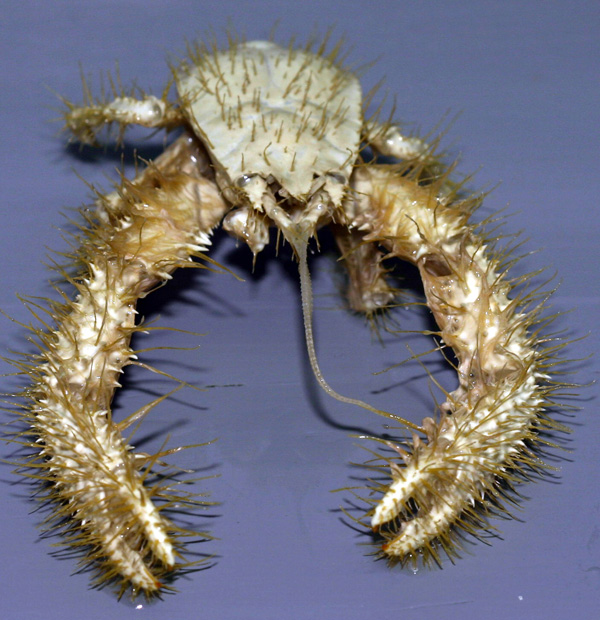
The yeti crab is named for its hairy, pincer-like arms, which look more like shaggy mittens than anything you’d expect to find underwater. This strange creature doesn’t just rely on its claws for defense but also for a unique feeding habit. Living near hydrothermal vents, the yeti crab cultivates bacteria on its claw “fur,” which serves as its primary food source. By waving its arms, it increases bacterial growth, making its claws a personal food farm. This adaptation is crucial for survival in the deep-sea environment, where food is scarce. Its reliance on bacterial cultivation demonstrates its unusual yet effective approach to survival.
Sea Cucumber
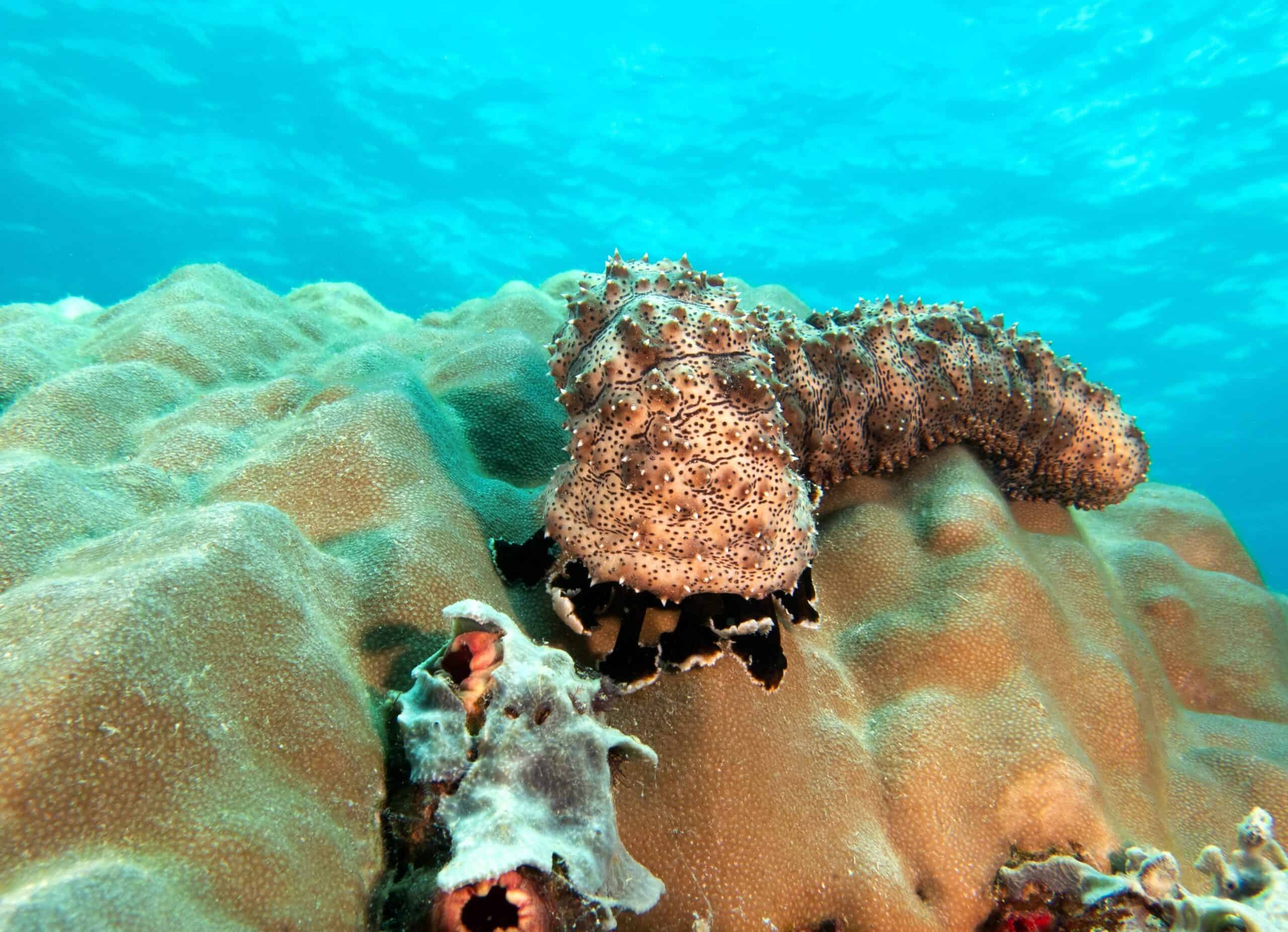
The sea cucumber might look unassuming, but its defense mechanisms are some of the most unusual in the ocean. When threatened, it ejects its internal organs, which are sticky and can entangle or confuse predators. This sacrificial method helps the sea cucumber escape, and the organs later regenerate. Additionally, it uses a toxin called holothurin to deter threats, making it less appealing to predators. This combination of startling escape tactics and toxicity allows it to survive even in the predator-rich areas of the ocean. The sea cucumber’s ability to regenerate is another survival skill that sets it apart.
Giant Tube Worm
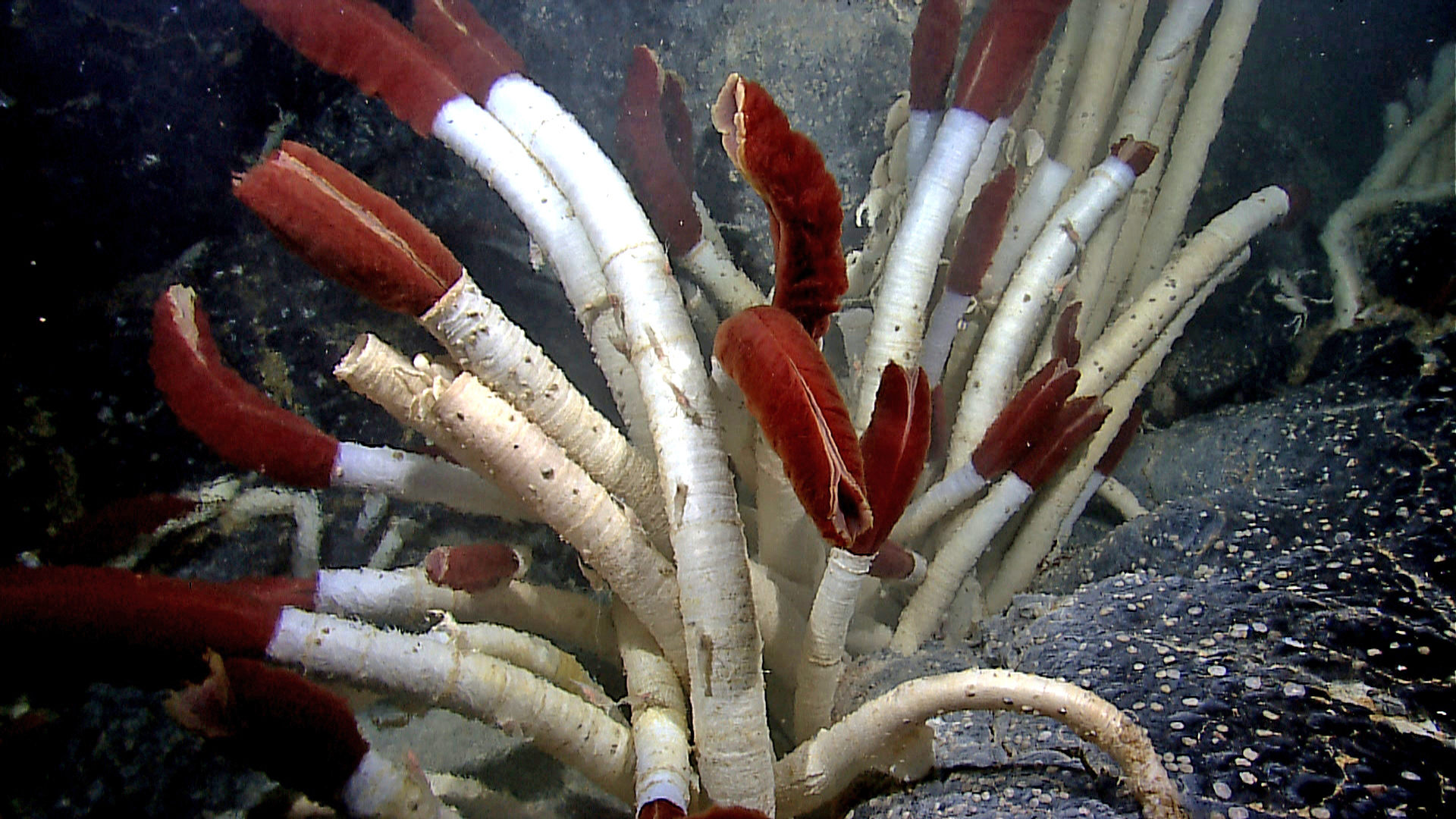
The giant tube worm is one of the ocean’s most extreme survivors, living in pitch-black hydrothermal vents at crushing depths. It relies on a unique symbiotic relationship with bacteria to survive, as it has no digestive system of its own. The bacteria, which live within its body, convert chemicals from the vents into energy, essentially feeding the tube worm. This relationship allows it to thrive in an environment where sunlight is nonexistent. Its long, tubular structure provides protection from extreme heat and toxins. By leveraging its symbiotic relationship, the giant tube worm has adapted to one of the harshest environments on Earth.
Stargazer Fish

The stargazer fish is a predator that lurks on the ocean floor, waiting to ambush unsuspecting prey. Its unique anatomy, with eyes and mouth on top of its head, lets it bury itself in sand while keeping a lookout above. This positioning gives it an advantage as it remains hidden while it hunts. Additionally, the stargazer fish can generate electric shocks, which it uses to stun prey or deter threats. Its capacity to blend in and deliver shocks makes it a feared hunter despite its small size. This combination of camouflage and electricity enables the stargazer to survive as an effective predator.
Leafy Seadragon
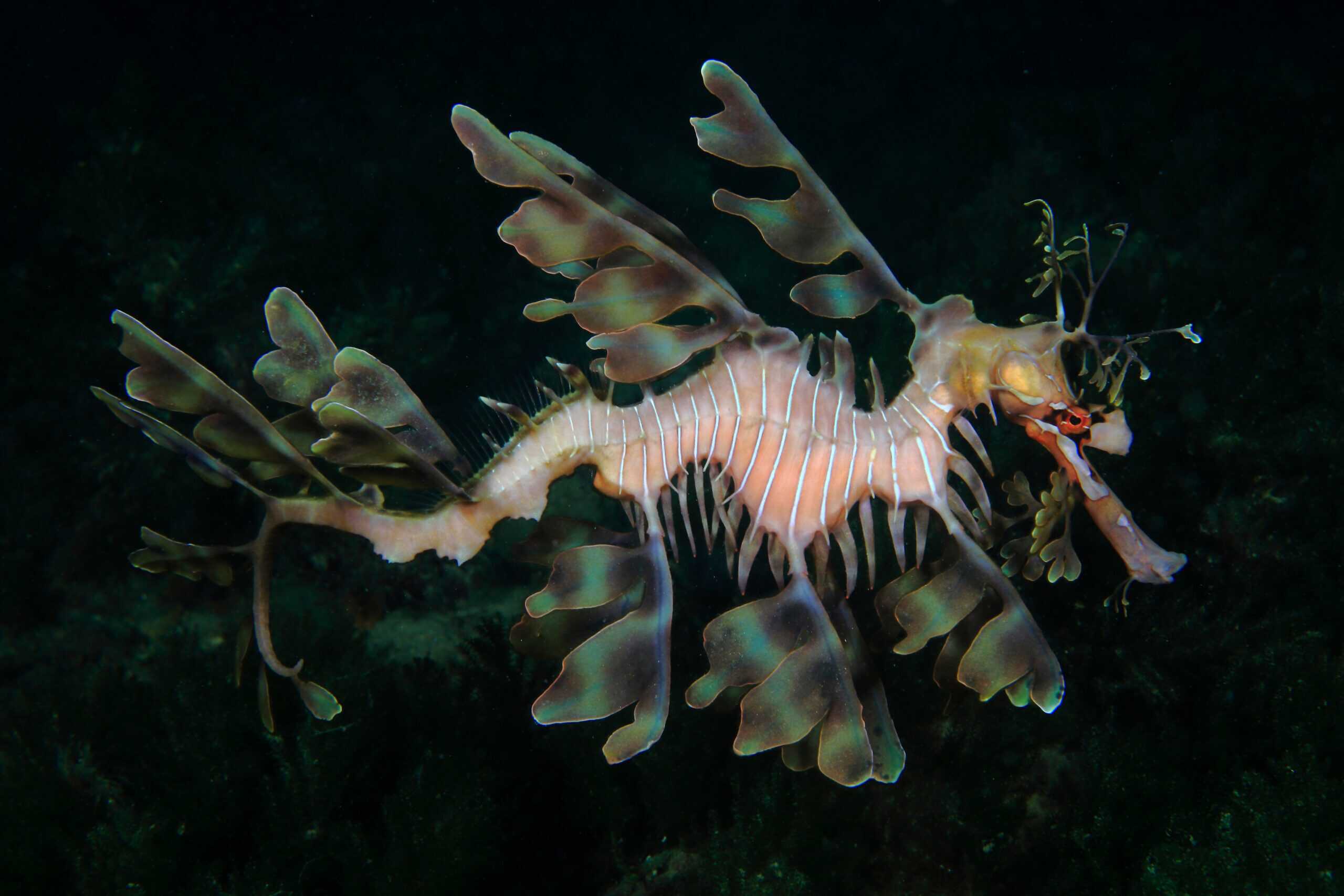
The leafy seadragon resembles a floating piece of seaweed, which is its greatest survival skill. This incredible mimicry allows it to blend perfectly into its kelp and seaweed surroundings, keeping it safe from predators. Unlike other fish, it relies on its camouflage rather than speed to avoid being noticed. Its “leafy” appendages provide no real propulsion but serve as a disguise in its habitat. This unique form of camouflage makes it nearly invisible to both predators and prey. The leafy seadragon’s slow, swaying movements add to its effective illusion of being part of the underwater plants.
Goblin Shark
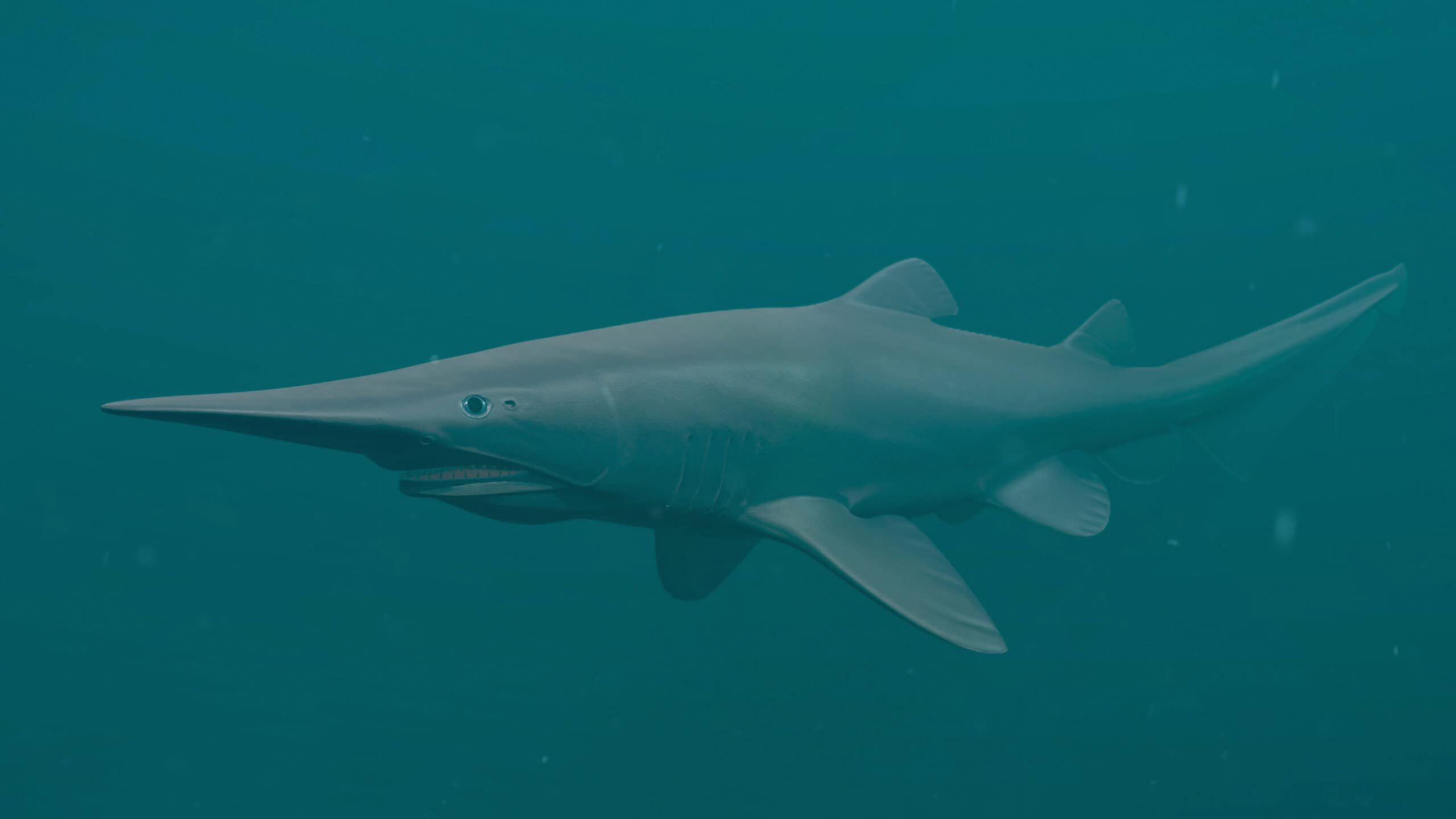
The goblin shark is a true deep-sea oddity with a long, flat snout and extendable jaws that look like something out of a science fiction movie. This rare species uses its elongated snout to sense electric fields, helping it locate prey in the dark depths where it lives. When it finds prey, its jaws protrude forward with lightning speed, grabbing its target in one swift motion. This jaw mechanism is one of the most unusual survival tools in the animal kingdom. Its ability to locate prey in darkness and quickly capture it makes the goblin shark a formidable predator.
Peacock Mantis Shrimp
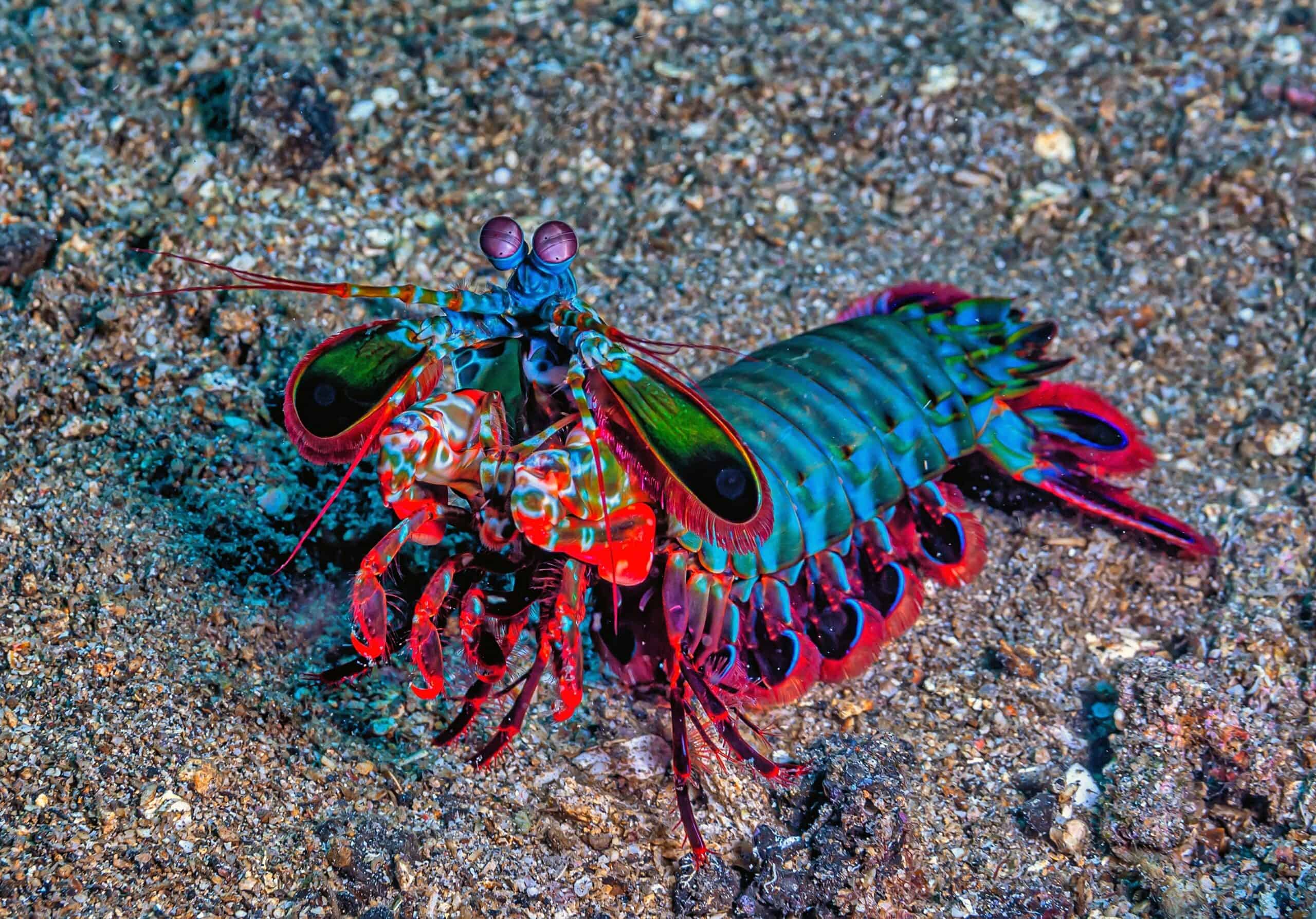
The Peacock Mantis Shrimp is one of the ocean’s most vibrant yet aggressive hunters. Known for its powerful punch, this shrimp can strike with the force of a bullet, shattering shells and even aquarium glass. Its club-like claws move so quickly that they generate cavitation bubbles, releasing heat and light as they collapse. This extreme force allows the mantis shrimp to hunt hard-shelled prey like crabs and clams. Its complex eyes, which can see polarized and ultraviolet light, aid in detecting even the slightest movement. With extraordinary strength and vision, the Peacock Mantis Shrimp has mastered the art of survival.
Sarcastic Fringehead
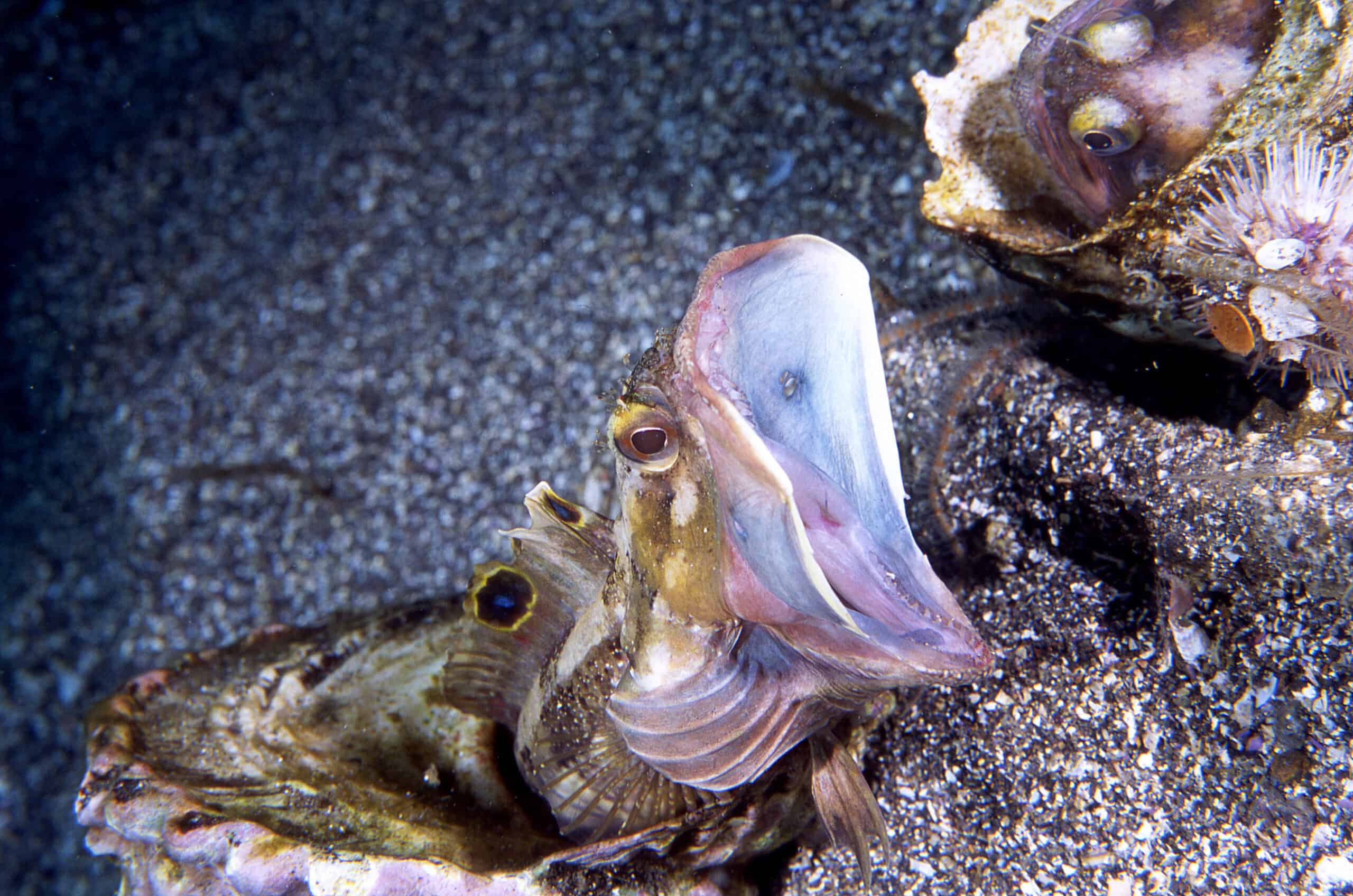
The Sarcastic Fringehead might look small and unassuming, but it has a remarkable defense strategy. When threatened, it opens its mouth wide, revealing an intimidating display that deters predators and rivals. This aggressive show of strength helps it establish and defend its territory in rocky crevices along the ocean floor. Its mouth expands like a fan, making it appear much larger and more formidable. By fiercely protecting its space, the Sarcastic Fringehead secures a safe area for hunting and hiding. This territorial behavior, combined with its bold display, makes it a successful survivor in its environment.
Giant Isopod
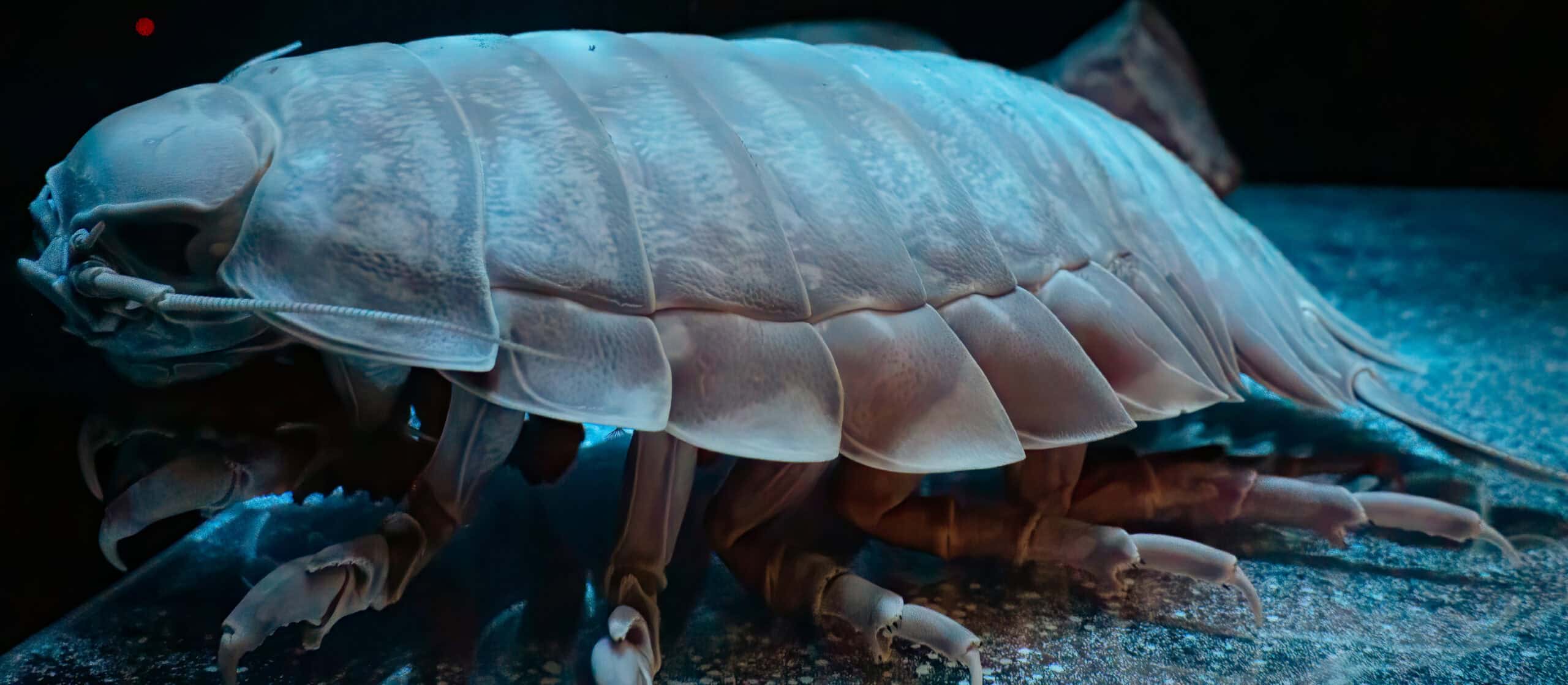
The Giant Isopod is a deep-sea scavenger, built to survive the dark and cold depths of the ocean. Resembling an oversized pill bug, it has a hard exoskeleton that protects it from predators. Living thousands of feet below the surface, it can go months without food, conserving energy in the harsh environment. When a meal finally appears, the Giant Isopod can consume vast amounts, storing energy for long periods. Its large eyes are adapted to low light, helping it detect food in the dim ocean depths. This combination of patience and resilience makes it an expert in deep-sea survival.
Flamingo Tongue Snail
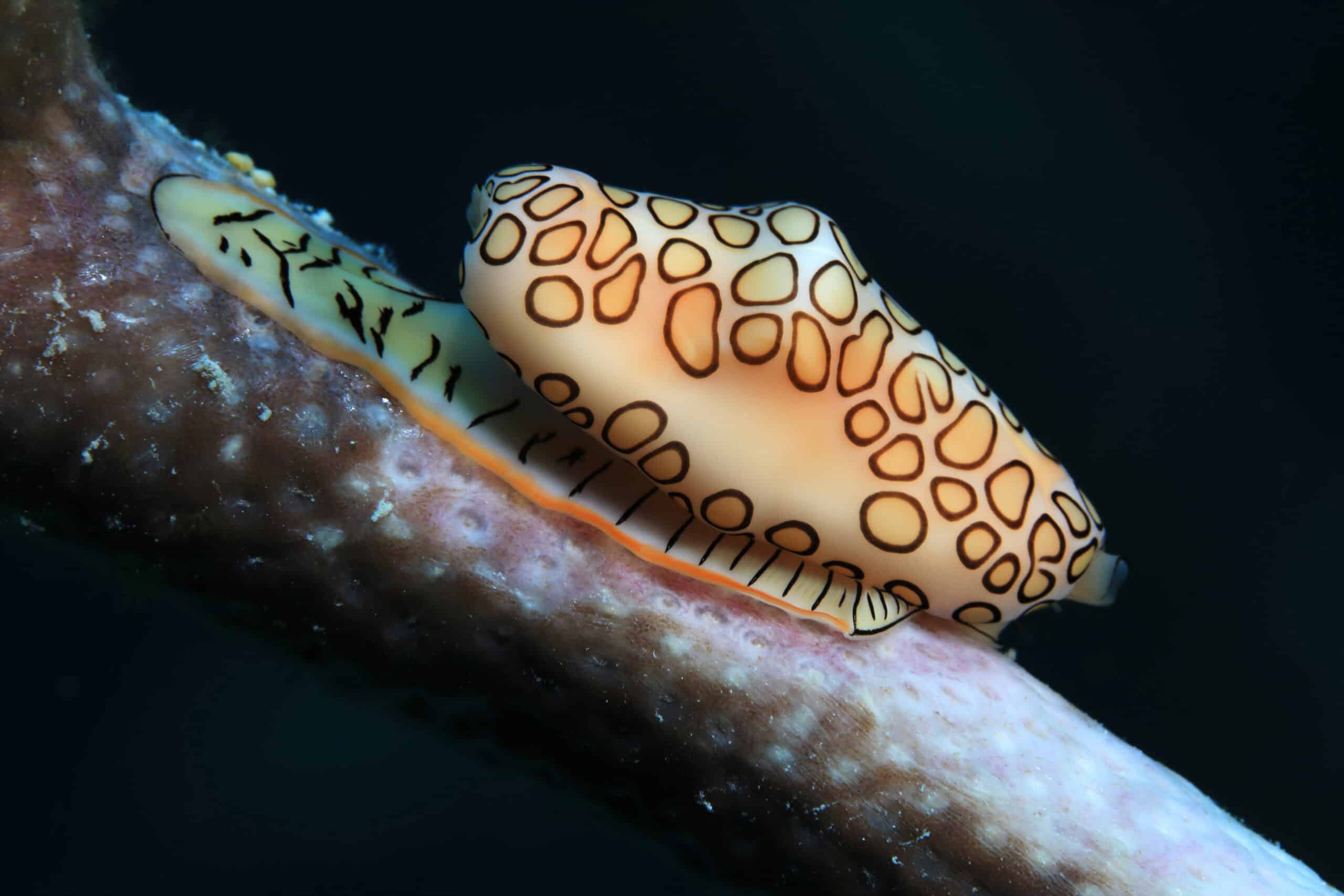
The Flamingo Tongue Snail is a small, colorful mollusk that relies on camouflage and toxic defenses. Its bright, spotted appearance warns predators of its unpalatable taste, thanks to toxins it absorbs from its coral diet. By feeding on coral, it not only gains nourishment but also incorporates the coral’s defenses into its own body. Its pattern serves as a warning, deterring most predators who recognize it as a toxic meal. The Flamingo Tongue Snail’s dual strategy of mimicry and toxicity helps it thrive among coral reefs, where it remains mostly untouched by hungry fish.
Gulper Eel
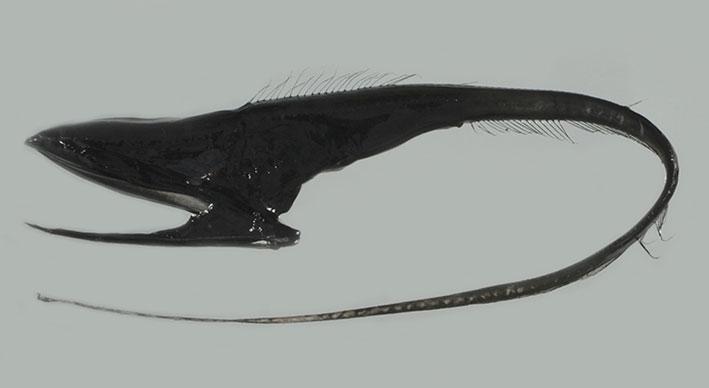
The Gulper Eel is a strange creature with an enormous mouth that allows it to swallow prey nearly as large as itself. Living in the dark ocean depths, it uses its expandable jaws to capture food that might be scarce. Its mouth can open wide enough to gulp down larger prey, a crucial adaptation in an environment with limited resources. A bioluminescent lure at the tip of its tail attracts smaller fish, luring them close enough to be eaten. This combination of a huge mouth and glowing lure makes the Gulper Eel a master at seizing food in the deep.
Barreleye Fish
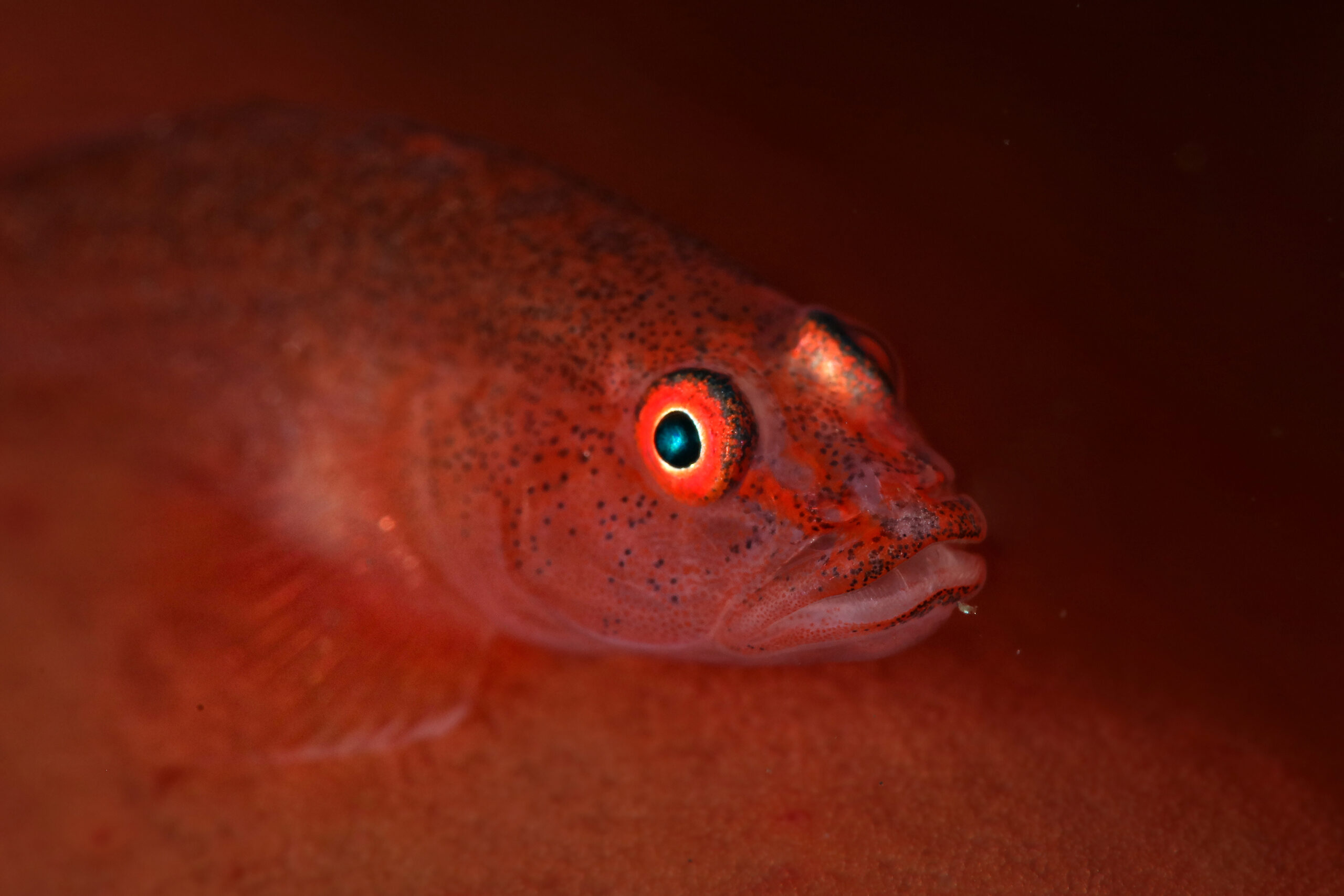
The Barreleye Fish is an eerie-looking creature with a transparent head and upward-facing eyes, allowing it to see through its own skull. These eyes can rotate within its head, giving it a wide field of view to locate prey in the dark ocean. Living deep underwater, it uses this unique vision to spot the silhouettes of animals above. Its transparent head helps it remain stealthy, as it looks almost invisible to predators and prey. This adaptation not only aids in hunting but also protects the fish from predators in the deep sea’s dimly lit world.
Anglerfish
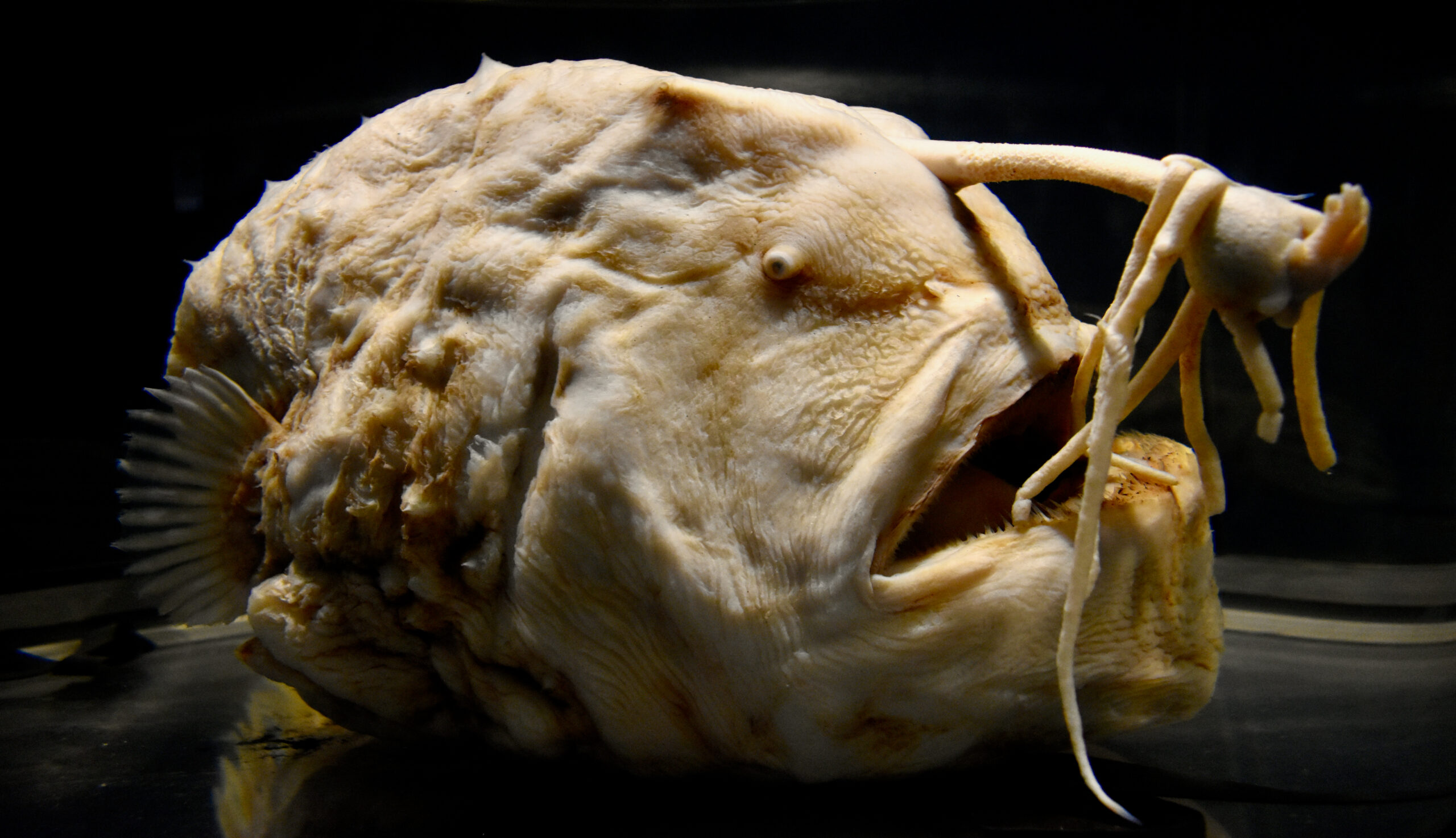
The Anglerfish is well-known for its bioluminescent lure, which dangles in front of its mouth to attract prey. This glow-in-the-dark lure helps it hunt in the dark depths, where light is scarce, drawing fish close enough to be devoured. Its mouth is large and filled with sharp teeth, allowing it to consume prey almost as big as itself. Female anglerfish can even fuse with their mates, a unique survival strategy that ensures reproduction in an environment where finding a partner can be challenging. This combination of a glowing lure and reproductive fusion makes the Anglerfish a true marvel of deep-sea survival.
Glass Octopus
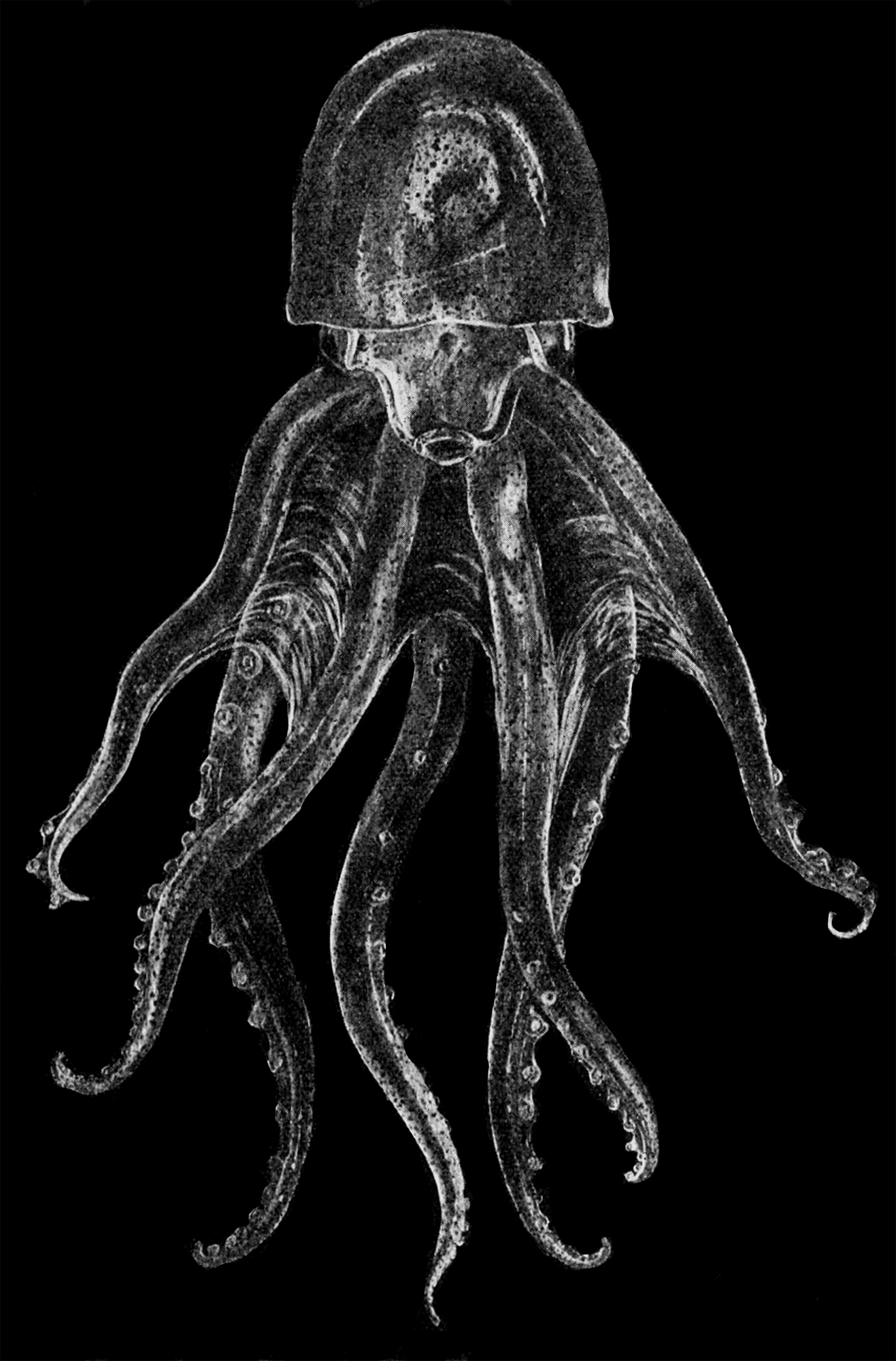
The Glass Octopus is almost completely transparent, making it nearly invisible in the open ocean. This natural camouflage helps it avoid predators in the vast, open waters where it lives. Its organs are visible but positioned in a way that minimizes detection by blending with its surroundings. This translucent body structure not only provides an advantage against predators but also keeps it hidden from prey. The Glass Octopus glides through the water with minimal movement, reducing the chances of creating a disturbance. With its ghostly appearance, it has mastered the art of hiding in plain sight.
Dumbo Octopus
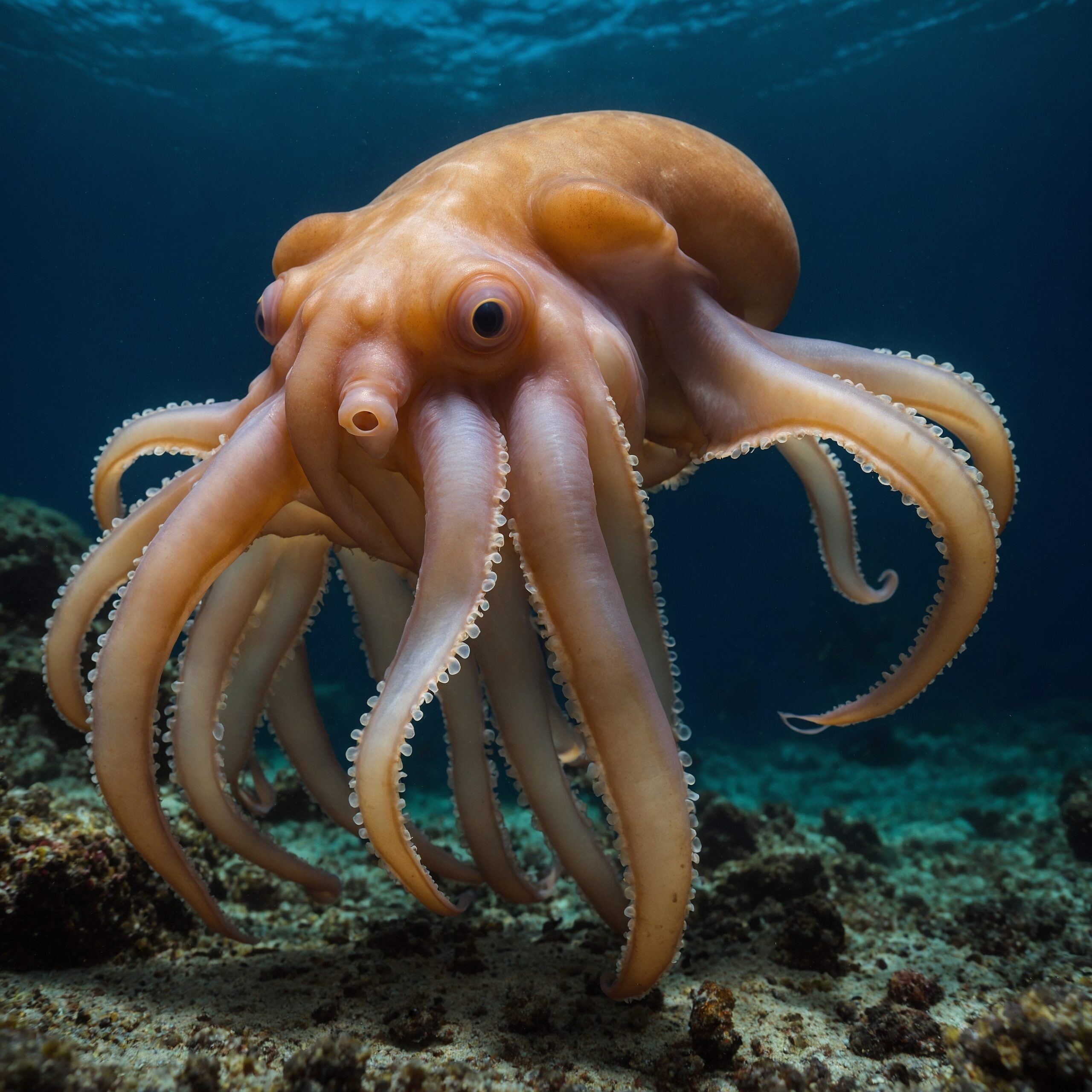
The Dumbo Octopus is one of the deepest-living octopuses in the world, found nearly 13,000 feet below the ocean’s surface. Named for its ear-like fins that resemble Disney’s Dumbo, it uses these fins to glide gracefully through the water. Unlike many other octopuses, it doesn’t have an ink sac, as there are few predators at such depths. Instead, it relies on slow, efficient movements to conserve energy in the dark, high-pressure environment. Its soft, gelatinous body helps it withstand the intense pressure of the deep sea. Feeding on snails, worms, and other small invertebrates, it swallows its prey whole. The Dumbo Octopus’s unique adaptations allow it to thrive in one of the ocean’s most extreme environments.
Christmas Tree Worm

The Christmas Tree Worm gets its name from its bright, tree-like appearance, which serves a specific survival purpose. Found on coral reefs, it uses its colorful, feathered “branches” to capture plankton and other food particles drifting by. These feathery appendages are also used for respiration, allowing it to gather oxygen from the water. When threatened, it can quickly retract into its burrow, vanishing from sight. Its hard tube-shaped burrow provides protection against predators. This combination of feeding and defense mechanisms makes the Christmas Tree Worm a remarkable survivor on the reef.
Frilled Shark
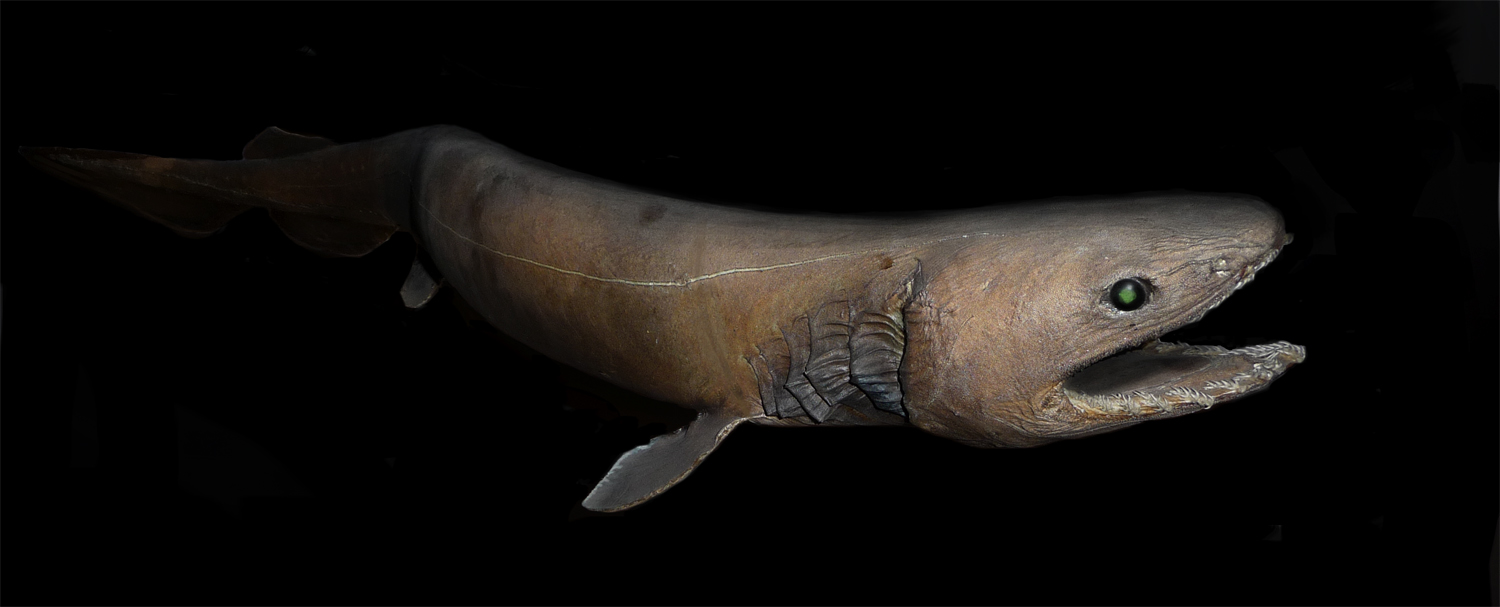
The Frilled Shark is an ancient species that has barely changed since prehistoric times, earning it the nickname “living fossil.” With a long, eel-like body and frilly gill slits, it looks like something from another era. Living in deep, dark waters, it’s rarely seen by humans. This shark uses a unique ambush technique, coiling its body and lunging at prey with lightning speed. Its long, flexible jaws allow it to swallow prey whole, even animals half its size. Slow metabolism helps it survive on limited food, a critical adaptation for deep-sea life. The Frilled Shark’s combination of ancient design and hunting skill makes it an effective predator in its remote habitat.
Tripod Fish
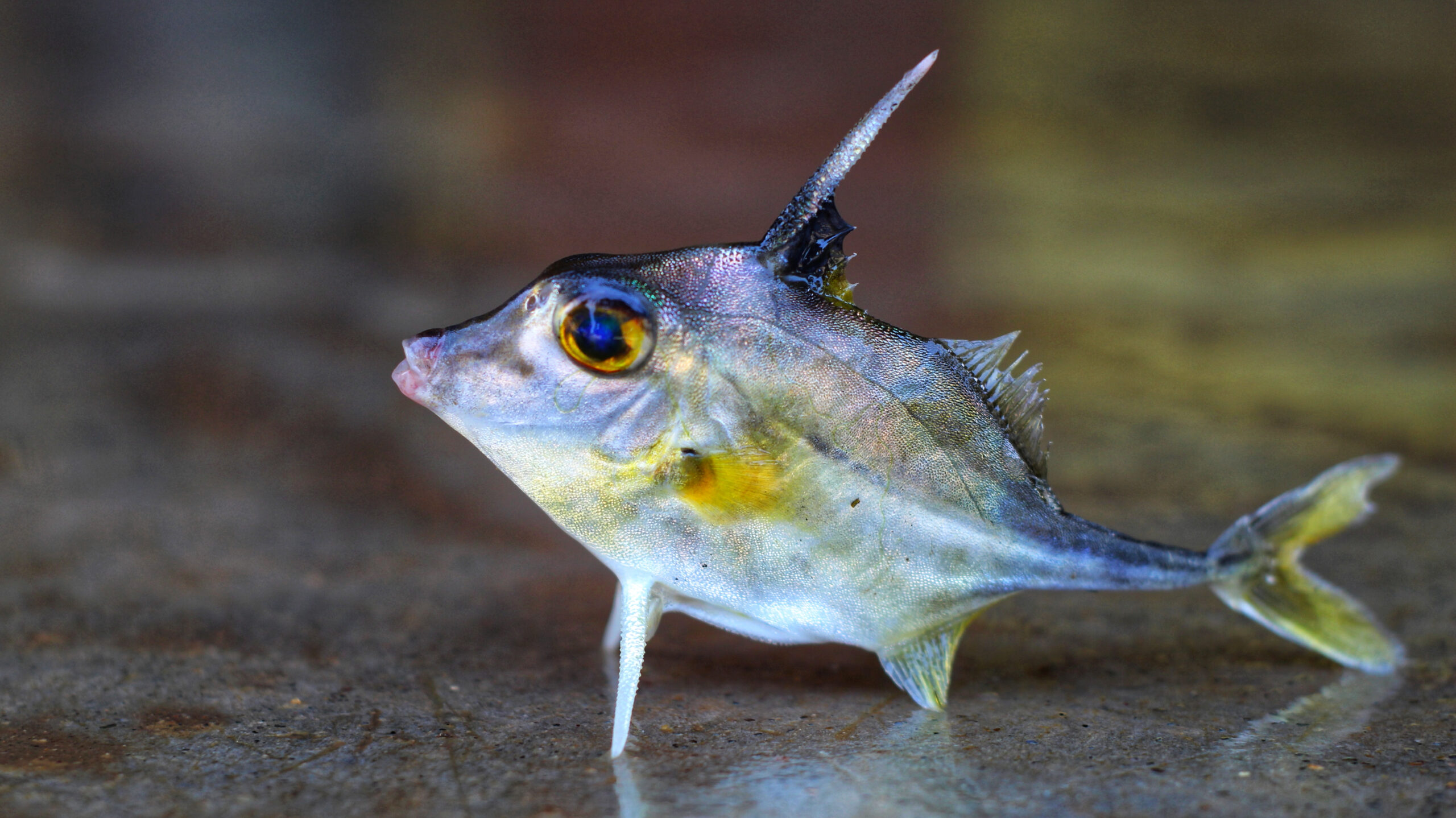
The Tripod Fish has one of the most unusual postures in the animal kingdom, standing on its long, fin-like extensions to “perch” on the seafloor. These bony fins act like a tripod, allowing it to stay motionless and conserve energy. It faces into the current, using its fins as stabilizers to detect nearby prey. With poor eyesight, it relies on touch and vibrations to locate food in the dark. This strategy lets it wait for food to come to it rather than actively hunting, conserving energy in the low-food environment of the deep sea. The Tripod Fish’s unusual stance is key to its survival in deep ocean waters.
Hatchetfish

The Hatchetfish is a tiny, silver fish with a unique survival strategy: bioluminescence. Found in the deep sea, it has special light-producing organs on its belly that mimic the faint light from above, helping it avoid predators. This camouflage, called counter-illumination, hides it from creatures looking up from below. Its narrow, hatchet-shaped body further reduces its silhouette, making it hard to detect. It can also change the intensity of its glow to match the surrounding light. The Hatchetfish’s remarkable use of light makes it one of the best-hidden creatures in the deep.
Comb Jelly
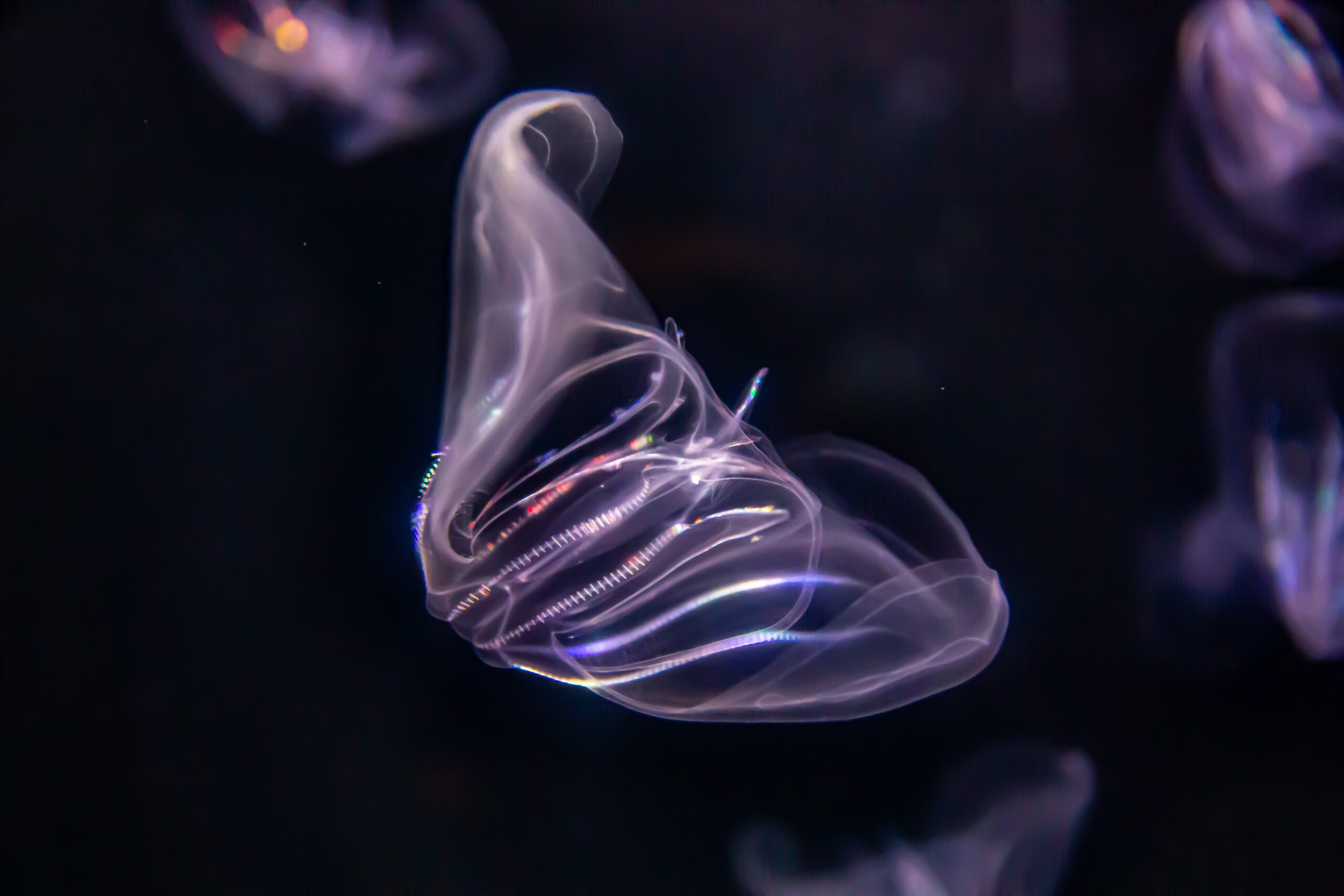
The Comb Jelly, also known as a ctenophore, has a translucent body covered in rows of tiny, hair-like structures called cilia. These cilia beat in waves, creating a beautiful, rainbow-like shimmer as it moves. Unlike other jellyfish, the Comb Jelly doesn’t sting; instead, it uses sticky cells to capture prey. It feeds on small plankton, using its tentacles to draw food toward its mouth. The transparency of its body helps it avoid detection by predators. Its unique combination of sticky tentacles and transparency makes the Comb Jelly a fascinating and well-adapted creature of the open ocean.
Black Swallower
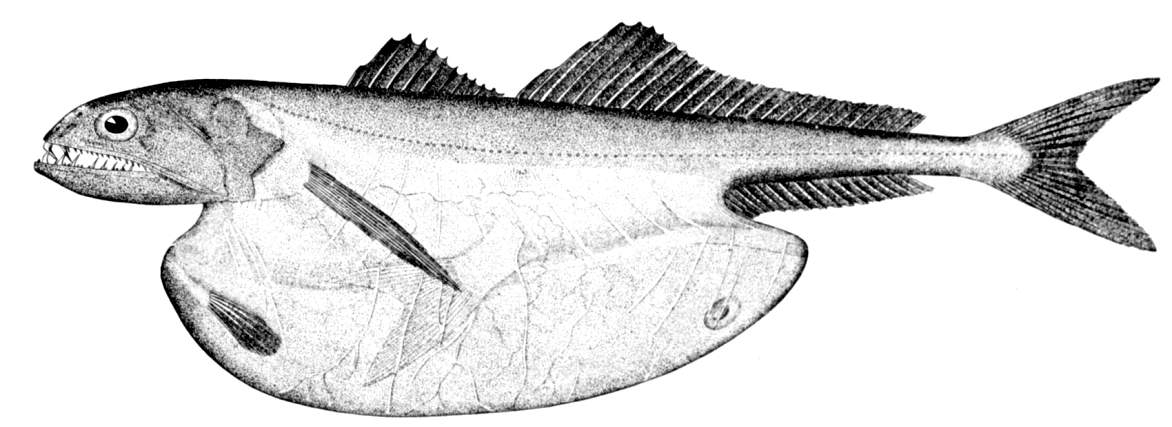
The Black Swallower is known for its impressive ability to consume prey much larger than itself. Found in the dark depths of the ocean, it has an expandable stomach that allows it to swallow fish up to twice its size. Its stretchy body can accommodate these massive meals, which are slowly digested over time. This allows the Black Swallower to go long periods without eating, a key survival skill in the food-scarce deep sea. Its sharp, backward-facing teeth prevent prey from escaping once caught. The Black Swallower’s incredible digestive system is essential to its survival in the harsh ocean depths.
Orange Roughy
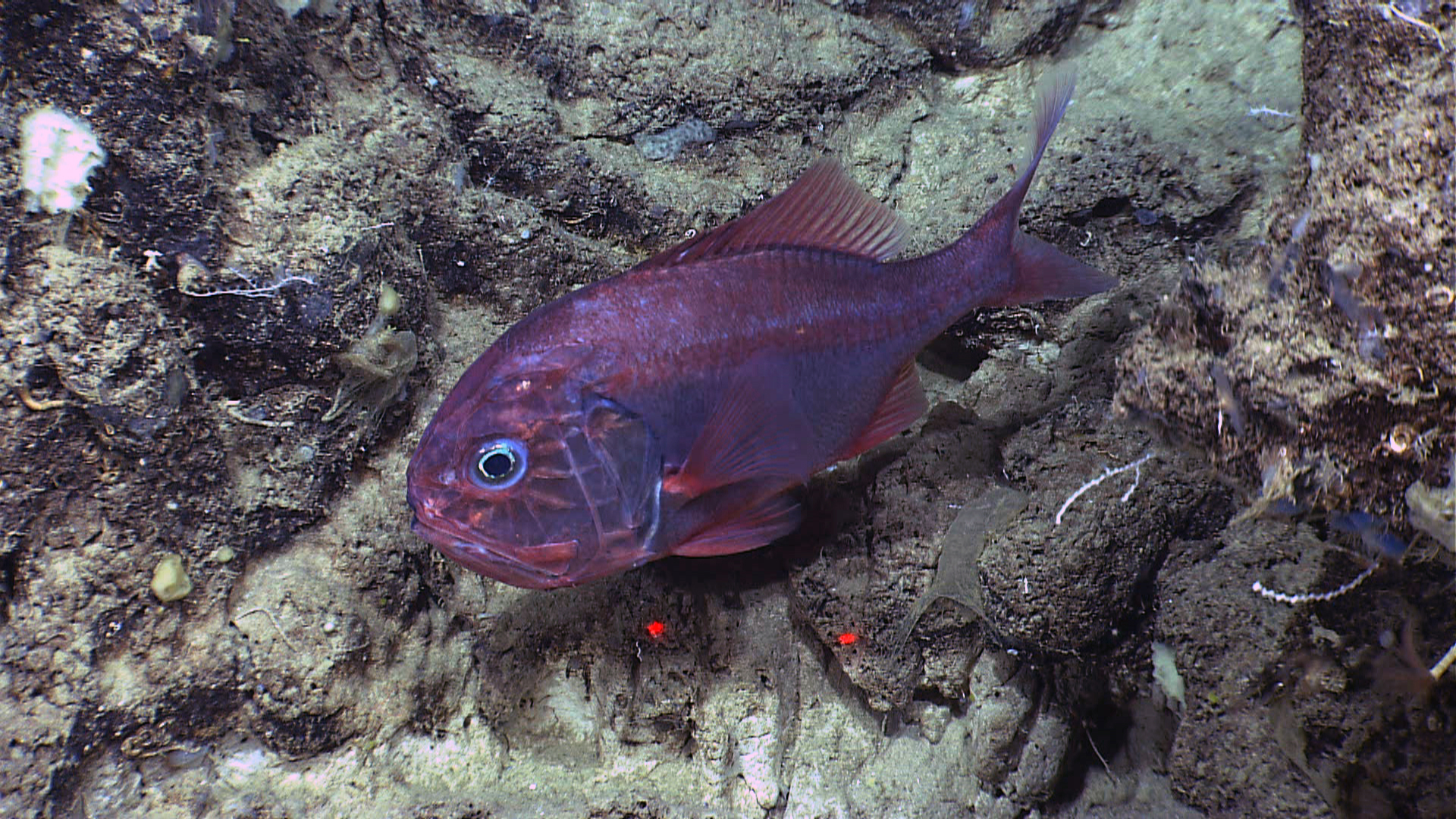
The Orange Roughy is famous for its longevity, living up to 150 years due to its slow growth and low metabolism. This deep-sea fish has a unique body structure that allows it to withstand extreme pressures at great depths. Its tissues contain oils rather than gas, making it less buoyant and better suited to life on the seafloor. With poor eyesight, it relies on its highly developed sense of smell to locate food. Its slow metabolism means it needs very little food to survive. The Orange Roughy’s long lifespan and slow lifestyle make it one of the ocean’s most resilient creatures.
This article originally appeared on Rarest.org.
More from Rarest.org
10 Largest Caves in the World
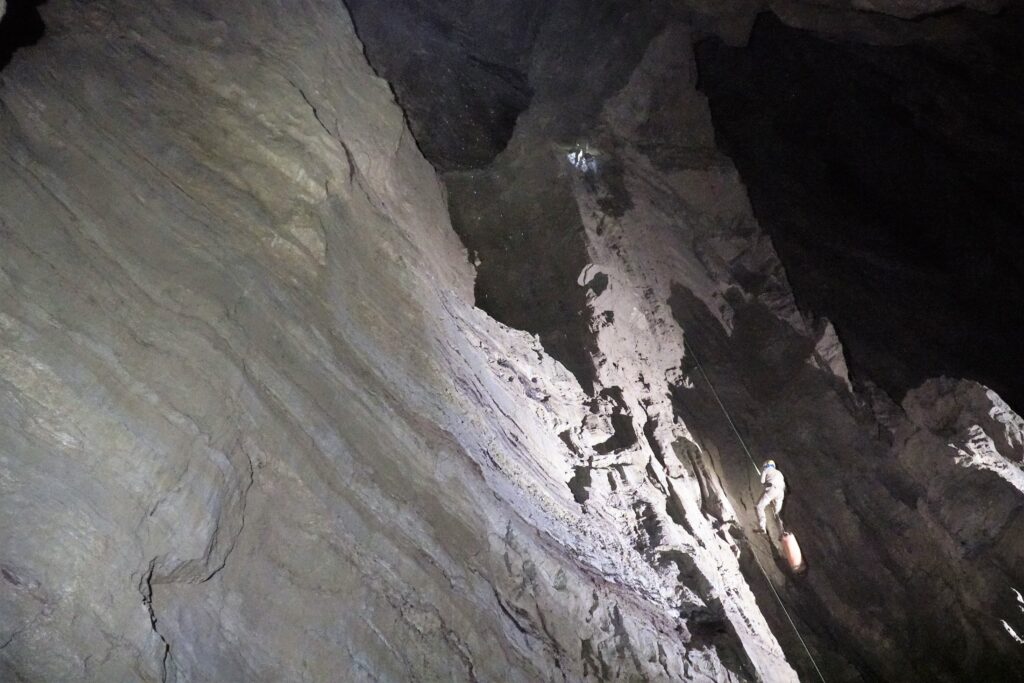
Exploring the largest caves in the world reveals some of nature’s most awe-inspiring wonders. Read More.
12 Largest Air Forces in the World

The strength of a nation’s air force plays a significant role in its defense capabilities. Read More.
10 Beloved Board Games from the Past That Are Now Rare Finds

Board games have always held a special place in family memories. From weekend game nights to friendly competitions, these games brought people together. Read More.
